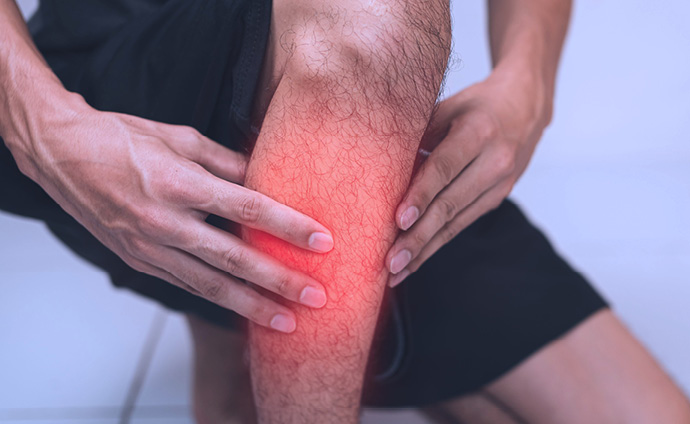Shin splints is a broad term that refers to pain felt anywhere along the shinbone, which runs from your knee down to your ankle at the front of your leg. While there are different types of shin splints, the most common is what is medically known as medial tibial stress syndrome, which occurs when there is inflammation of the muscles, tendons and tissue around the lower two-thirds of the inside edge of the shinbone.
What often happens is that when someone has pain in the front of their lower leg they’ll assume that it’s due to shin splints. But to have an idea of whether it’s that or something else, it’s important to understand common causes, symptoms and what else you could be dealing with instead.
What are the causes of shin splints?
Put simply, shin splints are caused by stressing or overusing your lower legs. This can be due to a sudden increase in the amount or intensity of exercise that you do, for example starting running if you haven’t before, or running on harder, more uneven or steeper surfaces than you’re used to.
On top of exercise, there are a number of factors that can also play a part in how likely you are to develop shin splints. If you have flat feet or fallen arches in your feet, you may be prone to shin splints. Tight calves, a poor walking or running gait (for example your ankle rolling inwards as you run), or even the wrong trainers can also impact the likelihood of suffering from and the severity of shin splints.

What are the symptoms of shin splints?
Essentially shin splints will just be pain in the front of your shin due to overstress and inflammation to the muscles around your shins. It may feel like the pain is only in the actual shin bone, but it could also feel tender in the muscles around the bone and can range from a dull, throbbing ache through to a sharp pain. It will normally occur both during exercise but then linger afterwards, even when you’re resting.
How long do shin splints last for?
Sometimes shin splints will get better all on their own after a few weeks as your body adjusts to your new exercise regime. Resting, doing more gentle exercise or exercising on softer surfaces to allow your shins to heal a little is never a bad idea, and you can always do a little bit of icing and take some ibuprofen to help speed up your recovery.
It’s important you don’t just continue doing the exact same exercise you’ve been doing and gradually build back up to a more intense workout plan, otherwise you will continue to experience the same issues . If you find your shin splints are lingering after a week or two, you should probably seek professional treatment from a physio.

What are shin splints commonly mistaken for?
Because the term shin splints broadly refers to pain or inflammation in the muscles and tendons around the tibia, it’s a bit of an umbrella term. However, there can be other reasons for experiencing pain in this area that don’t fall under the category of shin splints.
For example, it could be something as simple as bone bruising from a knock or fall. While that may not sound overly serious, bone bruising can take up to six months to fully heal, so even long after the injury has occurred and you may have totally forgotten anything ever even happened, it’s not uncommon to feel pain, particularly when exercising. Because of the long timeframe, many people will assume they have shin splints, forgetting that they actually injured themselves months earlier.
Another ailment that is often mistaken for shin splints is something a little more serious — a stress fracture. It’s important to note that bone bruising can be a sign that a stress fracture may develop if you don’t stop doing whatever activity is causing the issue, so if you’re not sure you should seek a professional opinion immediately.
A stress fracture happens when the muscles in an area simply can’t take it anymore and transfer the stress to the bone causing a minute crack. A step above that is a full bone fracture, which is what can happen when a stress fracture progresses and is left untreated. According to the American Association of Orthopaedic Surgeons, the shinbone is the most commonly fractured long bone in the body, so while it might seem crazy that someone could confuse a fracture with shin splints, it is possible.
In our next article we’ll explain how physiotherapy can help to treat shin splints in the event they don’t go away on their own with rest.
If you think you may be suffering from lingering shin splints and want an expert opinion, get in touch and arrange an initial consultation at a time that suits you.



